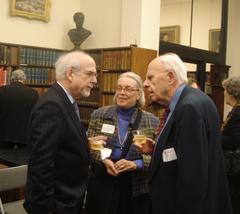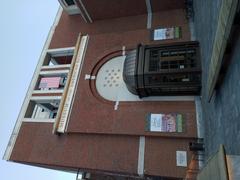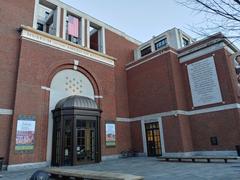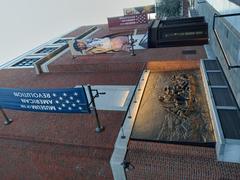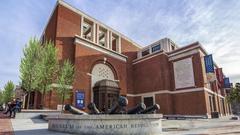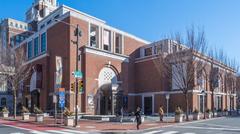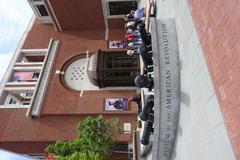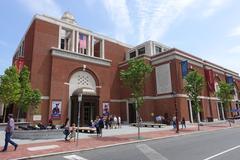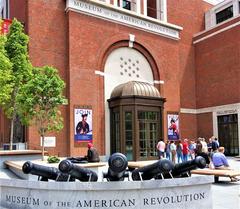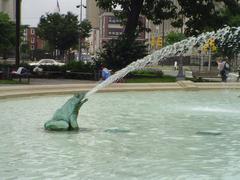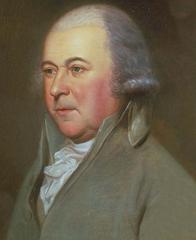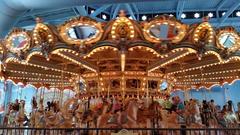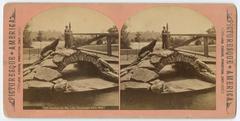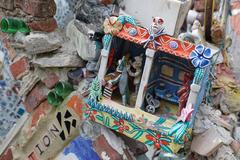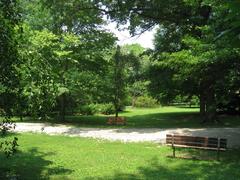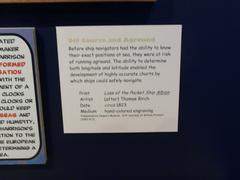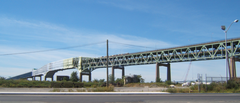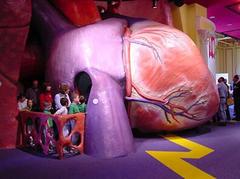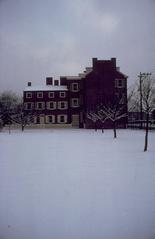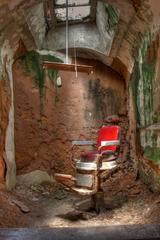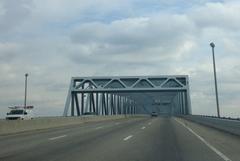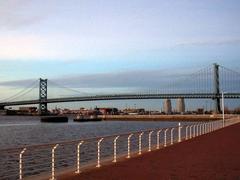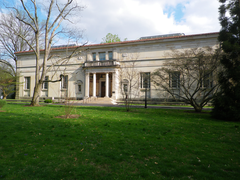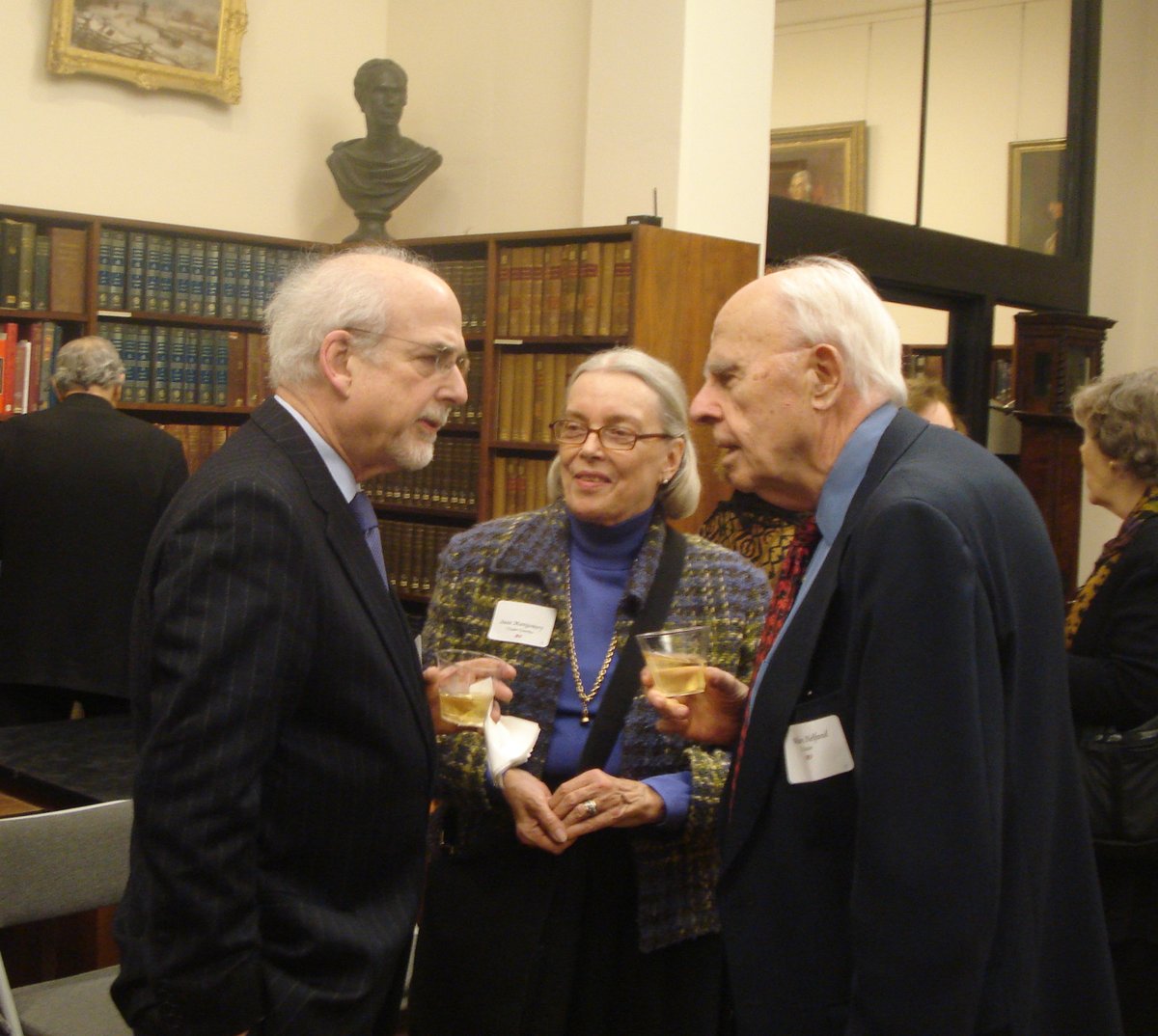
Visiting United States Custom House, Philadelphia: Hours, Tickets, and Tips
Publication Date: 18/07/2024
Introduction to the United States Custom House
The United States Custom House in Philadelphia, located at 200 Chestnut Street, stands as a testament to the city’s historical and architectural heritage. Completed in 1934 and designed by the esteemed architectural firm Ritter & Shay, this building exemplifies the Art Deco style with its geometric shapes, decorative elements, and modern materials such as aluminum and stainless steel. The Custom House not only embodies architectural beauty but also serves as a crucial historical site that has played an integral role in American commerce and trade. Philadelphia, being one of the oldest and most significant ports in the United States, needed a facility to manage the ever-growing volume of goods entering and leaving the country. The Custom House fulfilled this need by efficiently collecting customs duties and regulating trade, thus becoming a central figure in the city’s economic landscape. This guide aims to provide a comprehensive overview of the United States Custom House, covering its history, architectural significance, visitor information, and more, making it an essential read for anyone planning to explore this remarkable piece of American history.
Contents Overview
- Introduction
- Early Beginnings and Construction
- Architectural Significance
- Role in Commerce and Trade
- Historical Events and Milestones
- Preservation and Modern Use
- Visitor Information
- Visiting Hours and Tickets
- Travel Tips
- Cultural Impact
- Notable Features
- Restoration Efforts
- Visitor Experience
- Educational Programs
- FAQ
- Conclusion
Early Beginnings and Construction
The construction of the United States Custom House was part of a broader initiative to modernize federal buildings across the United States. The building’s design reflects the Art Deco style, characterized by its geometric shapes, decorative elements, and the use of modern materials like aluminum and stainless steel.
Architectural Significance
The Custom House is an exemplary model of Art Deco architecture. The building’s exterior features a series of setbacks that create a tiered effect, a hallmark of the Art Deco style. The facade is adorned with intricate carvings and reliefs that depict various aspects of commerce and trade, symbolizing the building’s purpose. The interior is equally impressive, with a grand lobby featuring marble floors, bronze fixtures, and murals that celebrate the history of Philadelphia and its role in American commerce.
Role in Commerce and Trade
The primary function of the United States Custom House was to serve as a hub for the collection of customs duties and the regulation of trade. Philadelphia, being one of the oldest and most significant ports in the United States, required a facility that could handle the increasing volume of goods entering and leaving the country. The Custom House played a crucial role in this regard, facilitating the efficient processing of imports and exports and ensuring that tariffs and duties were collected in accordance with federal regulations.
Historical Events and Milestones
Over the years, the United States Custom House has witnessed numerous historical events and milestones. During World War II, the building played a vital role in the war effort by regulating the import and export of goods essential for the military. In the post-war period, the Custom House continued to be a central figure in Philadelphia’s economic landscape, adapting to changes in trade patterns and technological advancements.
Preservation and Modern Use
In recognition of its historical and architectural significance, the United States Custom House was added to the National Register of Historic Places in 1972. This designation has helped ensure the preservation of the building’s unique architectural features and its continued use as a federal facility. Today, the Custom House is home to various federal agencies, including the U.S. Customs and Border Protection and the U.S. Immigration and Customs Enforcement.
Visitor Information
Visiting Hours and Tickets
The United States Custom House is open to the public from Monday to Friday, 9 AM to 5 PM. Guided tours are available, offering an in-depth look at the building’s history, architecture, and significance. Tickets can be purchased online or at the entrance. For the latest visiting hours and ticket prices, please visit the official United States Custom House website.
Travel Tips
- Getting There: The Custom House is conveniently located near public transportation options, including bus and subway lines. Parking is available nearby for those driving.
- Nearby Attractions: While in the area, consider visiting other historical sites such as Independence Hall, the Liberty Bell, and the Museum of the American Revolution.
- Accessibility: The building is wheelchair accessible, and accommodations can be made for visitors with special needs.
Cultural Impact
The United States Custom House is more than just a functional building; it is a cultural landmark that reflects the rich history of Philadelphia and its role in American commerce. The building’s Art Deco design and historical significance make it a popular destination for tourists and architecture enthusiasts. Guided tours provide visitors with an opportunity to learn about the building’s history, architecture, and its role in the development of Philadelphia as a major port city.
Notable Features
One of the most notable features of the United States Custom House is its grand lobby, which serves as a testament to the craftsmanship and attention to detail that went into the building’s construction. The lobby is adorned with murals by artist George Harding, which depict scenes from Philadelphia’s history, including its founding by William Penn and its role in the American Revolution. The building also features a series of bronze doors, each intricately designed with motifs related to commerce and trade.
Restoration Efforts
Over the years, the United States Custom House has undergone several restoration efforts to preserve its architectural integrity and historical significance. These efforts have included the restoration of the building’s exterior, the refurbishment of its interior spaces, and the preservation of its original fixtures and fittings. These restoration projects have been carried out with great care to ensure that the building remains true to its original design while meeting modern standards for safety and accessibility.
Visitor Experience
Visitors to the United States Custom House can expect a rich and informative experience. The building is open to the public, and guided tours are available that provide an in-depth look at its history, architecture, and significance. The tours often include access to areas that are not typically open to the public, such as the grand lobby and the upper floors, offering a unique perspective on this historic building.
Educational Programs
In addition to guided tours, the United States Custom House also offers a range of educational programs designed to engage visitors of all ages. These programs include lectures, workshops, and interactive exhibits that explore the history of the building, the role of customs in American commerce, and the broader history of Philadelphia. These educational initiatives help to ensure that the Custom House remains a vibrant and relevant part of the community.
FAQ
What are the visiting hours of the United States Custom House?
The Custom House is open to the public from Monday to Friday, 9 AM to 5 PM. For the most current information, please check the official website.
How can I buy tickets for a tour?
Tickets can be purchased online through the official website or at the entrance. Guided tours are available and provide a comprehensive look at the building’s history and architecture.
Is the United States Custom House accessible?
Yes, the building is wheelchair accessible, and accommodations can be made for visitors with special needs.
Conclusion
The United States Custom House in Philadelphia is a remarkable building with a rich history and significant architectural value. Its role in the regulation of trade and commerce has made it an integral part of Philadelphia’s economic landscape, while its Art Deco design and historical significance make it a cultural landmark. Through ongoing preservation efforts and educational programs, the Custom House continues to be a vital and engaging part of Philadelphia’s heritage.
Call to Action
For more information on visiting the United States Custom House, including tickets and tour details, please visit the official website. Stay up to date with the latest events and news by following us on social media.
Sources
- United States Custom House Philadelphia, General Services Administration source url
- Ralph Thomas Walker, Wikipedia source url
- National Register of Historic Places, National Park Service source url
